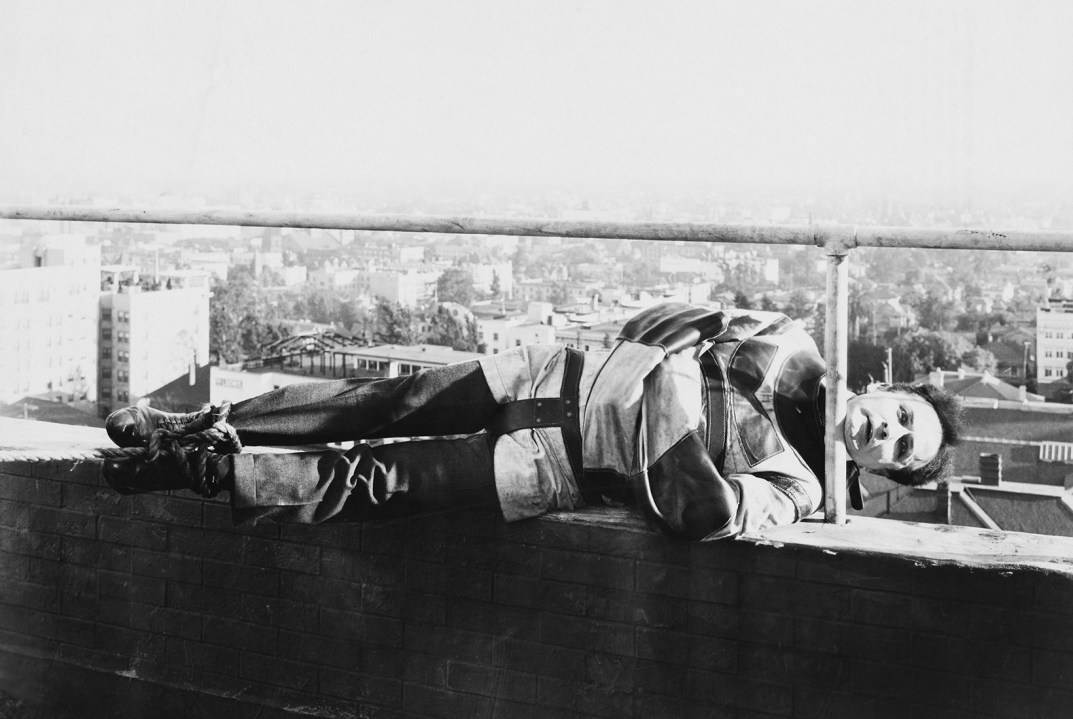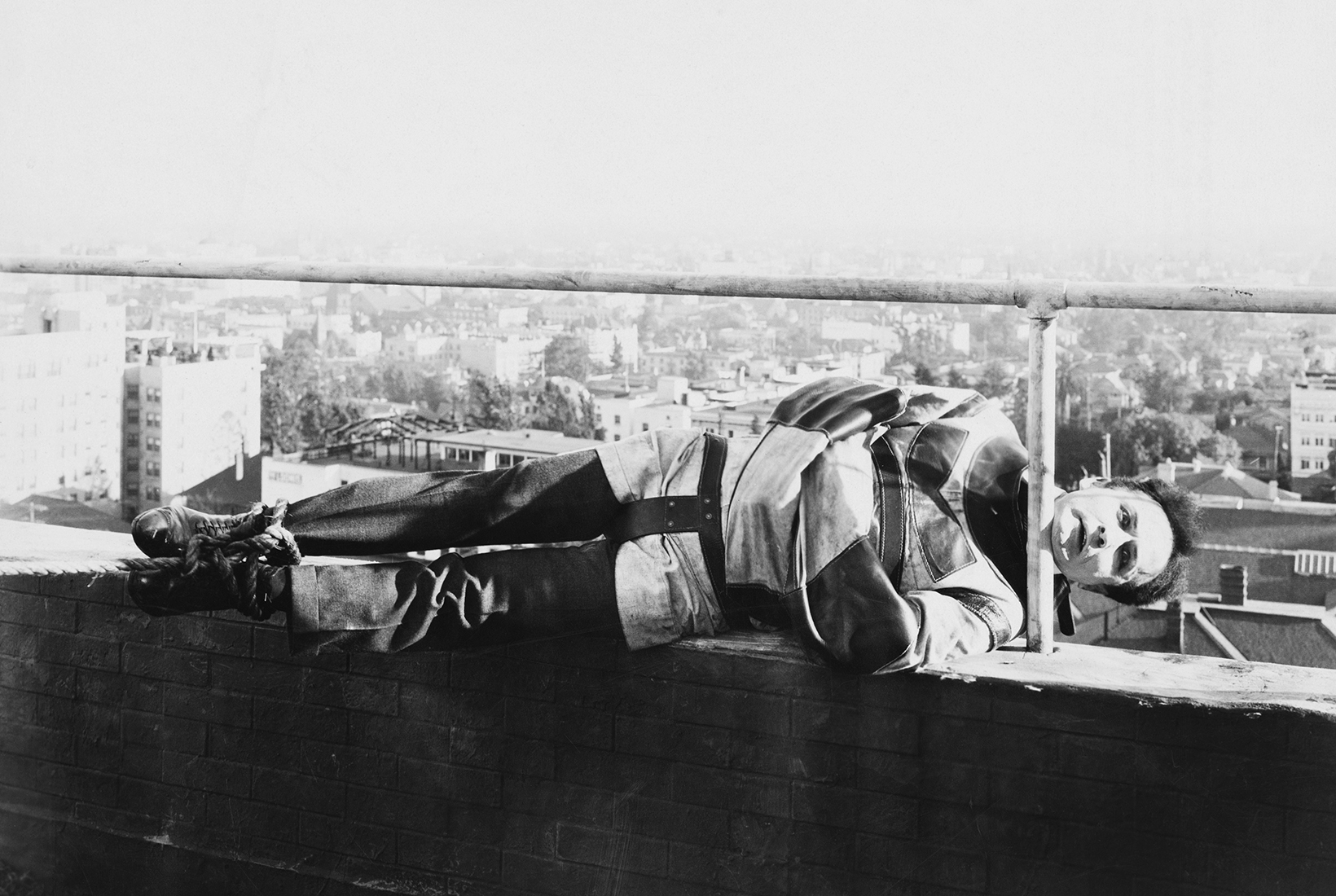Give thanks to the person who invented Venetian blinds, they say, or it would be curtains for us all. Curtains is mostly what people got at a Houdini show. He’d come on stage, be locked up or sealed in or tied down, and then the curtains would descend. They could stay drawn for an hour or more.
Ostensibly this was to ensure that nobody saw him effect his escape, but in reality it was to heighten the drama. Houdini was usually free within a couple of minutes, but he knew audiences didn’t want things to be too simple for him. As he put it:
The easiest way to attract a crowd is to let it be known that at a given time and a given place someone is going to attempt something that in the event of failure will mean sudden death.
Before the curtains went up again he’d splash himself with water so as to look sweaty from his labours.
Born Erik Weisz in Budapest in 1874, Houdini was one of the great hucksters. Had he been around today he’d have been a PR big shot. Whenever he jumped into a river handcuffed, he did so from a bridge situated near the local newspaper office. If no reporter showed up, he’d file his own copy — usually working in a paragraph to discredit a rival. He knew how to ring the changes on a story too. When his ability to bust out of a prison cell began to look passé, he took to releasing real prisoners and putting them back in different cells.
For many of these stunts Houdini wore nothing but the briefest of loincloths. If he was going to be searched, he argued, he might as well have stripped off in advance. Alas, his near nudity didn’t always prevent his ‘getting the finger’. Still, he can’t have been that surprised. Muscular, pretty and draped in chains, Houdini looked like a Bacon bondage boy come to writhing life.
Add in his mother- worship (‘If God in his infinite wisdom ever sent an angel upon Earth in human form it was my mother’ reads the dedication in one of his books) and double Oedipal crisis, and it is little wonder so many biographers have viewed Houdini’s story through a Freudian lens. (Not content with usurping his father, a failed rabbi, by becoming the family’s chief breadwinner before he was in his teens, Houdini also mounted a vicious attack on the magician whose name he all but stole, Jean-Eugène Robert-
Houdin.)
Adam Begley is having none of this. The USP of his contribution to Yale’s ‘Jewish Lives’ series is a thoroughgoing shunning of escapological hermeneutics. Harry (as he prefers to call him) ‘was not interested in the meaning of his stunts’ — and neither should we be. Nor, he adds, did his hero ever ‘ask… to be a poster boy for freedom’, and will slip any interpretive ropes with which we might think to snare him. At one point Begley quotes a character in Saul Bellow’s Humboldt’s Gift who wonders if Houdini ‘hadn’t had an intimation of the Holocaust and was working out ways to escape from the death camps’. No he hadn’t, says Begley, for whom a cigar is always a cigar.
Still, he gets the story told and even has some new facts to stir into the familiar mix. It is fascinating to learn that Houdini was taught how to escape from a straitjacket not in Chicago or Cheyenne but Sheffield. And the book is particularly good on the later years of Houdini’s life when, following his mother’s death, he was drawn to — and subsequently dismissive of — the then ubiquitous spiritualism. So dismissive, in fact, that although he never gave up believing that communication with the dead was possible, he vowed in the meantime to take every phoney medium down. Disguising himself in spectacles and false beard, he would sign up for séances in order to expose the trickery that was being used to fool the bereaved.
Not that everybody was convinced. It still seems shocking that Sir Arthur Conan Doyle, the inventor of modernity’s greatest rationalist, was a sucker for ectoplasm and fairy photographs. When Houdini showed him how, for instance, a voodoo medium could make a bell ring while her hands were held, Conan Doyle refused to accept it. At a séance during which Houdini’s mother supposedly addressed her son, not even being told that the woman had never spoken a word of English would convince Conan Doyle he’d been gulled.
Houdini died aged 52 — though not, as in the cheesy Tony Curtis film, because he failed to escape from his Chinese water torture cell, nor, as many have claimed, as a result of a punch to his abs of steel. It is true that a few days before his death he was winded off-guard by a mistimed blow. But Begley proves it couldn’t have ruptured his appendix and caused the peritonitis that killed him.
So how did the story gain currency? Easy, says Begley. Houdini’s widow put it about in the hope of making good on a double indemnity clause in his insurance policy. And now for my next trick.







Comments